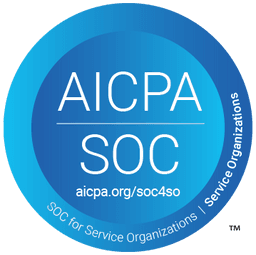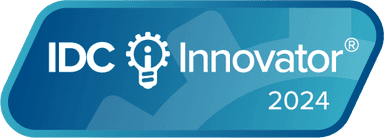Software Pricing Dictionary
Essential pricing terms for savvy software professionals
Cross-selling
Synonyms: Expansion selling, add-on sales, bundling, product pairing
Cross-selling is similar to upselling, as it involves increasing the value of a sale to existing or new customers. However, cross-selling refers specifically to selling related, complementary or add-on products and services based on the customer’s current package or interests. SaaS vendors can cross-sell by suggesting additional offerings that enhance or supplement the customer's primary purchase.
Further learning
Example
SaaS Company XYZ uses upselling to upgrade customers to higher package tiers, while they use cross-selling to suggest related product offerings that would complement the customer’s current package.
Price Differentiation
Synonyms: Differential pricing
The setting of varying prices (or even developing different offerings) to meet the specific needs of certain customer segments. The same approach used to do this can also be applied to generate pricing based on market demand, what the competition is doing or the timing of the deal.
This pricing strategy is used in many industries and recognizes the unique needs and preferences of each customer or segment of customers. In SaaS specifically, vendors can adjust their prices, packaging, subscriptions, usage elements, services and product features to meet these diverse needs and demands.
Example
“Many companies we work with are surprised to hear that their consistent margins are in fact an indicator of suboptimal pricing – usually due to a cost-plus or one-size-fits-all strategy. Within a short discussion, we are able to show how price differentiation would enable the company to better tap into their true revenue potential and generate a significant increase in volume and profit.” - Simon-Kucher & Partners
Pricing Flexibility
Pricing flexibility in SaaS can have different meanings depending on the context:
- Flexibility in day-to-day pricing decisions, i.e. giving Sales teams the flexibility to be creative and win deals with discounts and other incentives
- Flexibility in the pricing model itself, e.g. with a range of pricing tiers and feature sets to choose from, or with usage-based pricing models that enable customers to scale their end costs up or down by changing consumption
- Flexibility in the long-term pricing structure, i.e. viewing pricing models as evolving entities and having the structures in place to adjust them over time (pricing committees, pricing and packaging transformation projects, etc.)
Some level of flexibility in pricing is typically expected on the customer side in SaaS, and flexibility with the pricing model itself – evolving it over time – is crucial for any scaling business.
Further learning
Example
Company XYZ has maintained pricing flexibility from the beginning, enabling their Sales team to win deals while also evolving the high-level pricing strategy as they scale.
SaaS Pricing Automation
Synonyms: Dynamic pricing, AI for pricing, pricing agility
Utilizing software and algorithms to automatically calculate the cost of SaaS products based on predetermined factors like usage, customer behaviors, market conditions, etc. SaaS vendors harness the power of pricing automation technology to efficiently set pricing levels (or determine individual customer costs) that maximize profits and remove bottlenecks of manual pricing.
Further learning
Example
Rather than waiting for a human to update pricing strategy based on the latest market conditions, or to calculate a customer’s bill in Excel, SaaS providers use pricing automation to minimize the need for human intervention and to empower data-driven decisions.
SaaS Pricing Committee
A group of individuals within a software business who gather input and meet to discuss pricing. Usually these are cross-functional stakeholders who have a regular standing meeting to make informed, data-driven decisions based on current deals, pipeline and what’s happening with competitors and the market at large. A pricing committee usually fills gaps and ensures teams stay accountable to strategy plans between larger pricing and packaging transformation projects.
Further learning
Example
The members of the team who should be included in the SaaS pricing committee and driving decisions will depend on factors like the stage of the company, interest of executives in pricing issues and market conditions.
SaaS Pricing Model
The structure and strategy chosen by SaaS providers to determine how they will charge customers for software services. There are countless variations of SaaS pricing models, as each one is adapted to meet the requirements of the provider, customers, market and specific product; but common examples include flat-rate subscription, tiered, usage-based, freemium, per-user and hybrid (combining elements of different SaaS pricing models).
Further learning
Example
If a SaaS business offers a product with a resource that customers consume, like storage or compute resources, then elements of usage-based pricing could be the right SaaS pricing model to implement.
Upselling
Synonyms: Upgrading, expansion sales
Upselling refers to the practice of offering existing or new customers the opportunity to upgrade or purchase additional features, functionality or higher-tier plans. SaaS providers use upselling to increase revenue from the existing customer base and increase the MRR of new customers, while also maximizing the value delivered to those customers.
Upselling can involve suggesting higher-priced plans, expanded storage and usage limits or enhanced support options. The most effective upsell strategies will strategically identify customers’ evolving needs, determine the best fit upgrades and demonstrate the additional value to be gained, rather than simply attempting to sell as much as possible.
Further learning
Example
It is much more difficult and costly to sell to a new customer versus an existing customer, which is why upselling is such an effective strategy to increase NRR.
From our blog
Explore the financial intricacies and strategies that underpin pricing excellence.
See all Finance posts

